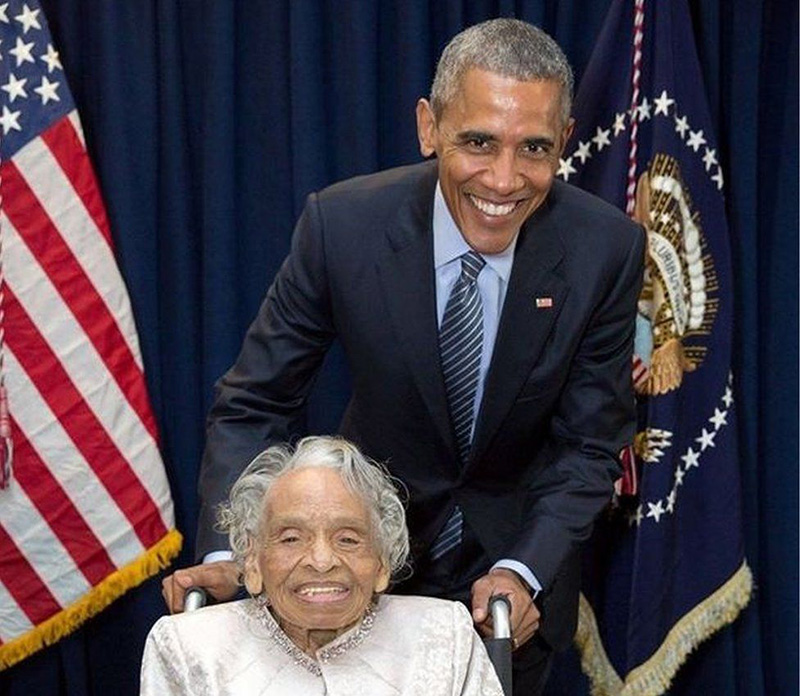What is bullying?
Bullying among children and youth is defined as repeated, unwanted aggressive behaviour(s) by a youth or group of youths. It involves an observed or perceived power imbalance. It can result in physical, social, or educational harm or distress for the targeted youth.[1]
- The power imbalance may be based on differences in size, strength, ability, popularity, appearance/body size, race/ethnicity, culture, religion, financial resources, sexual orientation, gender identity/expression, or any other difference.
- Bullying is a relationship problem. Over time, the person who is bullying feels more and more powerful and the person who is being bullied feels more and more helpless, shamed, and trapped.
- Bullying requires relationship solutions. That is, solutions that create safety and social-emotional growth for those who bully, those who are bullied, and those who witness it.
- Bullying happens most often when few adults are around (e.g., school playgrounds, hallways, cyberspace).
- At least 1/3 of bullying is experienced beyond school boundaries (e.g., recreation settings, online).
Forms of bullying
- Physical bullying: physical aggression such as hitting, kicking, shoving, stealing or harming property.
- Verbal bullying: teasing, name calling, put-downs, shaming, threatening or humiliating others.
- Social bullying: excluding others, damaging friendships, negative gossiping, spreading rumours etc. This is also known as indirect or relational bullying.
- Cyber bullying: is the use of electronic communication technology to bully others. The technology itself creates a power imbalance. It reaches youth anywhere and at any time, messaging is instantaneous, the audience can be huge, and the messages can be permanent.
How common is bullying?[2],[3]
In 2018, a large and representative sample of Canadian youth in grades 6 through 10 were asked whether they have been involved in bullying over the last two months.
- 36% of the sample reported they had been involved in bullying at least once over this time period.
- 6% bullied others
- 20% were bullied
- 9% reported they both bullied others and were bullied
- Being bullied is more common among girls than boys – approximately 1 in 3 Canadian girls are bullied.
- Bullying others is more common among boys than girls.
- Teasing or name calling is the most common form of bullying for both boys and girls.
- Bullying rates in Canada have remained relatively stable over the last 12 years. Relative to other wealthy nations, Canada ranks in the middle in terms of bullying rates (23rd out of 35 nations).
Bullying – The role of peers
Observational research of elementary school children showed that bullying incidents occurred every 7 minutes on the playground and bystanders were present for 85% of these incidents.[4] Bystanders influence bullying dynamics in both ways:
- When bystanders remain passive observers, this sends the message that bullying is acceptable. The bigger the audience, the longer the bullying incident lasts.[5]
- When bystanders intervene, the bullying stopped within 10 seconds in 57% of observed incidents.[6]
Defending against bullying is a complex, social-emotional task for bystanders. They must recognize the event as bullying, take responsibility for helping, and have the skills necessary to intervene successfully. Research suggests that defending can take multiple forms[7]:
- Comforting: Offering emotional support to the person being bullied.
- Reporting: Telling a teacher or another adult about the bullying.
- Solution-focused: Using assertiveness or problem solving to stop the bullying.
- Aggressive: Using retaliation against the aggressor.
Youth should be encouraged to defend using the behavior that is safest and most effective for them in the moment. Boys tend to defend aggressively and may need help to develop more prosocial intervention strategies[6].
Who is at risk?
Of being bullied?
- Those with few friends who are seen as unable to defend themselves
- Those with a disability, neurodevelopmental difference, special healthcare need, intellectual exceptionality (both gifted and learning disability)
- Overweight children and youth
- LGBTQ children and youth report being bullied significantly more and more severely than other students[8]
Of bullying others?
- Children and youth who believe that bullying is normal
- Those who have friends who bully
- Not all children and youth who bully are alike. Some are popular and socially skilled, while others have behaviour problems and few friends.
Dangers and psychological impacts
Bullying is a health issue. It is linked to both short and long-term mental and physical health problems and academic under-achievement.[9] Strong and supportive relationships with parents, a caring and responsive school environment, and positive relationships with family and friends can all help protect against long-term harm. The harm related to bullying is related to:
- Severity and frequency of the bullying behaviour
- Pervasiveness of involvement in bullying (e.g., is bullying happening in just one relationship or place, or in many relationships and places?)
- Chronicity of involvement in bullying (how long has the bullying gone on? Have there been other bullying problems in the past?)
Children and youth whose bullying involvement has been severe/frequent and/or pervasive, and/or chronic require the most intensive and focused support.
Research has documented many immediate and long-term negative impacts of bullying involvement[10]:
- Negative impacts of bullying are significant and have been found across all cultures.
- For some individuals, the impacts can last throughout life.
- Lessons learned about the abuse of power in relationships from bullying may carry over to: sexual harassment, dating aggression, intimate partner violence, workplace harassment, child and elder abuse.
- Children and youth who both bully others and are bullied tend to have the most severe and enduring problems, including the negative impacts in both lists below.
Negative impacts linked to bullying others[11]
- Depression
- Substance abuse
- Aggression and anti-social behaviour
- Sexual harassment and dating aggression
- Academic problems and increased school dropout rate
- Delinquency and criminal behaviour
Negative impacts linked to being bullied[12]
- Depression, anxiety, mood disorders
- Substance abuse
- Low self-esteem and social confidence
- Isolation and loneliness
- Poor peer relationships
- Stomach aches, headaches
- “Toxic stress” or enduring low grade systemic inflammation which is linked to disease[13]
- School absenteeism and learning problems
- Contemplating, attempting, or committing suicide
How can psychologists help?
In Schools?[14]
- Provide training for staff members on how to promote healthy relationships and social climates, and to identify and address bullying issues.
- After training, teachers report feeling more supportive toward children who are bullied and more confident handling bullying issues.
- Recommend school policies that address prevention, intervention and evaluation. [15]
- Develop intervention strategies for children who are involved in bullying problems that develop social-emotional capacity and skills. Counsel students and families dealing with impacts of bullying and victimization.
Those who bully others?
- Help them recognize and understand the negative impacts of their bullying on others and on themselves.
- Support understanding of human rights to safety, respect, and dignity.
- Help develop the ability to control behaviour, resist peer pressure, and use problem solving strategies.
- Help find ways to use their power in a positive way (e.g., identify leadership roles).
- Find opportunities to engage in positive social experiences with a diverse mix of peers where the focus is on making a contribution to the greater good (e.g., peer mentoring, or peer mediation)
Those who are bullied?
- Help develop an immediate plan of safety so they can feel comfortable attending school and participating in community activities.
- Listen, empathize, and reduce shame and self-blame.
- Help them understand and assert their human rights to safety, respect, and dignity.
- Help find ways to build self-esteem, confidence and healthy interests.
- Find opportunities to form positive friendships with peers.
Bystanders?
- Support understanding of human rights and healthy relationships.
- Educate about bullying and its impacts on health and well-being.
- Use role-play and scripts to teach bystanders specific skills for standing up to various bullying situations, instead of being passive or joining in.
- Run workshops to build assertive communication skills and problem solving skills, and peer pressure resistance.
Where can I get more information?
Additional information about bullying can be found at www.prevnet.ca. For downloadable resources, see Factsheets and Tools for Schools at http://www.prevnet.ca/resources/bullying-prevention-facts-and-tools-for-schools
You can consult with a registered psychologist to find out if psychological interventions might be of help to you. Provincial, territorial, and some municipal associations of psychology often maintain referral services. For the names and coordinates of provincial and territorial associations of psychology, please visit: http://www.cpa.ca/public/whatisapsychologist/PTassociations
This fact sheet has been prepared for the Canadian Psychological Association by Annie Tang, Dr. Joanne Cummings, Dr. Debra Pepler, and Kelly Petrunka, PREVNet. This fact sheet was updated by Dr. Wendy Craig, Dr. Debra Pepler, and Laura Lambe.
February 2021
Your opinion matters! Please contact us with any questions or comments about any of the Psychology Works Fact Sheets: factsheets@cpa.ca
Canadian Psychological Association
Tel: 613-237-2144
Toll free (in Canada): 1-888-472-0657
[1] Centers for Disease Control and Prevention (2014). Retrieved from http://www.cdc.gov/violenceprevention/pdf/bullying_factsheet.pdf.
[2] Craig, W., Pickett, W, King, M. (2020) The health of Canadian youth: Findings from the health behavior in school-aged children study. Public Health Agency of Canada, retrieved from https://www.canada.ca/en/public-health/services/publications/science-research-data/youth-findings-health-behaviour-school-aged-children-study.html#ch10
[3] UNICEF (2020). Canadian companion to the UNICEF report card 16. Retrieved from: https://www.unicef.ca/en/unicef-report-card-16
[4] Craig, W. & Pepler, D. (1997). Observations of bullying and victimization in the schoolyard. Canadian Journal of School Psychology, 2, 41-60. See: http://www.prevnet.ca/sites/prevnet.ca/files/research/PREV-Craig-Pepler-1997-Communique-peers.pdf for a downloadable research summary of this article.
[5] O’Connell, P., Pepler, D., & Craig, W. (1999) Peer involvement in bullying: Issues and challenges for intervention. Journal of Adolescence, 22, 437-452.
[6] Hawkins, D.L., Pepler, D., & Craig, W. (2001). Peer interventions in playground bullying. Social Development, 10, 512-527. See http://www.prevnet.ca/sites/prevnet.ca/files/research/PREV-Hawkins-etal-2001-Communique-peer-intervention.pdf for a downloadable research summary of this article.
[7] Lambe, L. J., & Craig, W. M. (2020). Peer defending as a multidimensional behavior: Development and validation of the defending behaviors scale. Journal of School Psychology, 78, 38-53.
[8] Taylor, C. & Peter, T., with McMinn, T.L., Schachter, K., Beldom, S., Ferry, A., Gross, Z., & Paquin, S. (2011). Every class in every school: The first national climate survey on homophobia, biphobia, and transphobia in Canadian schools. Final report. Toronto, ON: Egale Canada Human Rights Trust. Retrieved from: http://egale.ca/wp-content/uploads/2011/05/EgaleFinalReport-web.pdf.
[9] Hymel, S. & Swearer, S. (2015). Four decades of research on school bullying. American Psychologist, 70, 293-299.
[10] Hymel, S. & Swearer, S. (2015). Four decades of research on school bullying. American Psychologist, 70, 293-299.
See also: Takizawa, R., Maughan, B., & Arsenault, L. (2014). Adult health outcomes of childhood bullying victimization: Evidence from a five-decade longitudinal British birth cohort. Am J Psy in Advance. Retrieved from http://ajp.psychiatryonline.org/data/Journals/AJP/0/appi.ajp.2014.13101401.pdf.
See also: Ozdemir, M., & Stafttin, H. (2011). Bullies, victims, and bully-victims: A longitudinal examination of the effects of bullying victimization experiences on youth well-being. Journal of Aggression, Conflict and Peace Research, 3, 97-102.
[11] Farrington, D.P. & Toffi, M. M. (2011). Bullying as a predictor of offending, violence, and later life outcomes. Criminal Behaviour and Mental Health (21)2, 90-98. See also: Fergusson, D. M., Boden, J. M., & Horwood, L. J. (2014). Bullying in childhood, externalizing behaviors, and adult offending: Evidence from a 30-year study. Journal of school violence, 13(1), 146-164.
[12] Bowes, L., Maughan, B., Ball, H., Shakoor, S., Ouellet-Morin, I., Caspi, A., Moffitt, T.E., and Arseneault, L. (2013). Chronic bullying victimization across school transitions: The role of genetic and environmental influences. Development and Psychopathology, 25, pp 333-346.
13 Copeland, W. E., Wolke, D., Lereya, S. T., Shanahan, L., Worthman, C., & Costello, E. J. (2014). Childhood bullying involvement predicts low-grade systemic inflammation into adulthood. Proceedings of the National Academy of Sciences, 111(21), 7570-7575.
See also: Rueger, S. Y. & Jenkins, L. N. (2014). Effects of peer victimization on psychological and academic adjustment in early adolescence. School Psychology Quarterly, 29, 77-88.
See also: Vaillancourt, T., Hymel, S., & McDougall, P. (2013). The biological underpinnings of peer victimization: Understanding why and how the effects of bullying can last a lifetime. Theory into Practice, 52(4), 241-248.
[14] Pepler, D. & Rodrigues, B. (in press). Bullying prevention: Re-imagining a non-violent and healing learning environment for all students at school. In E. Cole and M. Kukai (Eds.)
Mental Health Consultation and Interventions in School Settings: A Scientist–Practitioner’s Guide, pp. 339-357. Boston: Hogrefe Publishing.
[15] Ttofi, M. M., & Farrington, D. P. (2011). Effectiveness of school-based programs to reduce bullying: A systematic and meta-analytic review. Journal of Experimental Criminology, 7(1), 27-56.
 Natalie Rosen
Natalie Rosen
 Keturah Whitehurst
Keturah Whitehurst
 Joanna Pozzulo
Joanna Pozzulo Some of the psychologists doing interesting things during the pandemic
Some of the psychologists doing interesting things during the pandemic Vina Goghari
Vina Goghari Judy Moench
Judy Moench Chloe Hamza
Chloe Hamza
 Laurie Ford
Laurie Ford Dr. Christine Chambers
Dr. Christine Chambers Dr. Olivia Hooker
Dr. Olivia Hooker
 Mélanie Joanisse
Mélanie Joanisse Khush Amaria
Khush Amaria Inez Beverly Prosser
Inez Beverly Prosser Helen Ofosu
Helen Ofosu Kenneth & Mamie Phipps Clark
Kenneth & Mamie Phipps Clark Maya Yampolsky
Maya Yampolsky
 Karen Blair
Karen Blair Courtney Gosselin
Courtney Gosselin Jonathan N. Stea
Jonathan N. Stea Adrienne Leslie-Toogood
Adrienne Leslie-Toogood
 Andrew Ryder
Andrew Ryder Ian Nicholson
Ian Nicholson Chelsea Moran
Chelsea Moran Gabrielle Pagé
Gabrielle Pagé Jenn Gordon
Jenn Gordon
 Steven Taylor
Steven Taylor


